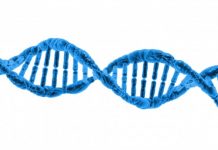This article is written by Farzeen Rose, a student of Government Law College, Thiruvananthapuram, Kerala. This article seeks to understand physical evidence and its examination in detail.
It has been published by Rachit Garg.
Table of Contents
Introduction
Physical evidence, also known as real evidence or material evidence, is a tangible object which can tie the defendant, the witness, or the victim to the crime scene. Physical evidence helps the examiner or investigator to recreate the crime scene and infer the sequence of events that might have taken place. Physical evidence, being objective in nature, can be used as a solid and reliable fact to prove or disprove statements from the individuals involved. It is through the combined understanding of the physical evidence and statements from various parties involved, that the judge makes a decision in a case.
Physical evidence is also referred to as the “silent witness” as it is one of the crucial ways to prove the involvement of someone in a certain activity that took place at the crime scene. When documented without errors, collected by experts without any mismanagement, and preserved properly, it is completely reliable and is irrefutable. Physical evidence can help infer information related to the method the defendant used to harm the plaintiff, the trajectory of the weapon used, and even an estimated intent in case it is a question of plain murder or self-defense. Even things like dust and dirt can contribute immensely to the establishment of a fact. For example, the presence of a different type of soil in the crime scene can prove that there has been an external influence and it can even indicate or hypothesize the source of such a presence
Physical evidence is not one particular group of things that fit a certain mold. According to the American Academy of Forensic Sciences, it could be anything from being microscopic in nature and hence may go unnoticed by an ordinary human to something that is macroscopic to a level that someone may perceive it to be normal and hence insignificant.
History of physical evidence
Edmund Locart, the director of the first-ever crime laboratory, was the first person to emphasize the importance of contact or trace forensic evidence that we extract as physical evidence. He formulated a theory called the exchange principle, which talks about the exchange that takes place when there is a contact between two objects. This leaves to the experts what is known as physical evidence.
As the times progress, the legal system is increasingly putting more importance on objective facts and hence, physical evidence. The crime laboratory must be used as an effective investigative aid to utilise the physical evidence obtained from the crime scene and sustain the criminal charges.
Examination of physical evidence
The examination of physical evidence at the crime scene and later is done by forensic scientists or experts. They conduct it according to the rules and regulations prescribed by law regarding the admissibility of evidence and the procedure to be followed.
Forensic experts have precise methods of examining, collecting, and preserving all various kinds of evidence. They categorize it in several ways, analyze it, and present it as evidence as required. Forensic evidence can generally be categorized into:
- Living physical evidence and
- Non-living physical evidence.
Here, living physical evidence is anything obtained that might have been from a living thing like blood, saliva, hair. etc. and non-living physical evidence is anything that is inorganic in nature like fingerprint impressions, tire impressions, glass, or bullet.
Non-living physical evidence can be collected and examined in various ways. Taking photographs or images of the marks, copying and reforming the images in plaster, and fingerprint lifting( the process by which fingerprints from a crime site are secured) are some methods used to examine physical evidence.
Examples of physical evidence
- Paint – Paint chips or residue, when analysed as evidence can indicate its type or class, as saved in the databases. Similarities between the paint substance found in two things can help establish a connection.
- Glass- Glass particles are found in various cases such as a hit and run or a murder. Once examined, it may provide leads regarding the crime.
- Explosives- Explosives when examined can lead the investigation to the type of explosive and the source. Further, the traces of explosives found elsewhere or on anyone can provide useful clues.
- Ballistics- Ballistics refer to gunshot residues, firearms, or ammunition. There are specialised tests used to look into the details of such weapons used.
- Dust and dirt- Dust, dirt, sand, or soil can be used to establish a connection between two different places and may even help with understanding the time and weather when the incident took place.
- Fingerprints- Fingerprint lifting or other methods are used to obtain the fingerprints and then using the automated systems for fingerprint identification, it can identify suspects or accomplices.
- Impressions- impression evidence includes tire tracks, shoe prints. etc. can be lifted, cast using a tape, or photographed and compared with the suspect’s tires or shoes.
- Fracture matches- Fracture matches in forensics are when an object is torn or broken, and its components can be matched when placed next to each other. This can show how multiple components were once part of the same object.
- Questioned Documents- Documents found at the crime scene such as ransom notes or other materials can be analyzed based on watermarks or the handwriting on it which may help with identifying the suspects.
These are just the most common examples of physical evidence. The list is not exhaustive and includes many more such as tool marks, fibers, and trace evidence.
Legislations relating to evidence in India
Section 3 of the Indian Evidence Act, 1872, defines evidence. This Section talks about oral evidence (statements that are made by the witness permissible by the court) and documentary evidence (written or electronic evidence). Ideally, there should be provisions relating to physical evidence, demonstrative evidence, and testimonial evidence. The definition provided in the Act does not cover material evidence such as weapons or results from local enquiries. However this shortcoming has been covered by courts by statutory interpretations during trials involving physical evidence such as in the case of Santosh Kumar Singh v. State through CBI,(2010), Murari Ram v. State of Madhya Pradesh,(1979), etc. However, for the courts to step in, the issue must have already arisen. This leads to the problem of not having enough sources to address future issues.
Crime scene investigations and all related forensic processes are usually governed by native rules and laws. Everything from obtaining a search warrant to submitting evidence to the laboratory and then to the court is specified in native laws. If not followed thoroughly, it can lead to the court not admitting the materials so obtained and examined as evidence.
Physical Evidence has been mentioned in the Protection of Children from Sexual Offenses Act, 2012. In certain cases, physical evidence cannot be used to prove or disprove certain claims and statements. In this Act, it is mentioned that child sexual abuse is difficult to prove precisely because of the fact that it leaves no physical evidence. In this case, the physician’s testimony formulated based on the child’s statements and examination is valued more than just an examination that may provide little to no physical evidence.
With regard to the Indian criminal justice system, there is an immediate need to increase the capacity of forensics. The presence of too many variables during a trial makes physical evidence the most dependable source that the system can rely on.
The National Human Rights Commission, in 1999, published a report named State of the Art of Forensic Science: For Better Criminal Justice in which they examined the forensic science system in detail, and suggested changes for its improvement. It advocated for the strengthening of existing forensic laboratories and for the establishment of new well-equipped laboratories. A homogeneous system of evaluation and research should be established so that the quality of the report does not vary because of a lack of expertise or proper technology.
The quality of reports from forensic facilities depends on the quality of samples sent by the investigating officers from the crime site. Thus, all investigating officers should be provided forensic training on collecting and preserving physical evidence until handing it over to the laboratories. Judges and public prosecutors should also be given the same as they provide and evaluate the evidence.
International perspective
Physical evidence and its importance can be known by how crimes such as perjury, tampering of evidence, or bribery are punishable in almost all countries in the world. These affect the credibility of the evidence greatly. Obstruction of justice is openly condemned, and hence, destruction of evidence, tampering with evidence, or hiding of evidence with the knowledge that it will hinder the proceedings regarding a case, is a criminal offense. Tampering with evidence is taken so seriously, that in the US, under federal law, the defendant may be given 20 years of imprisonment and a fine.
Though physical evidence and forensic science, in general, have been gaining traction for the past few years, there is not enough influx of published materials regarding the collection, study, and examination of the different kinds of evidence. There is also a lack of research on the extent of influence it has on courts and judicial systems all over the world. However, this may be approached subjectively as the effect physical evidence has on different cases varies depending on the degree of crime, the different kinds of physical evidence, and the specific circumstances surrounding the case.
Criminal investigations are now most often done by the method of reconstruction or re-creation. For this, doctors, forensic experts, and the police work together, recovering all possible physical evidence and mapping out a proper sequence of the events that may have happened. It is through proper reconstruction and investigation, that the statements of the witnesses and suspects can be upheld or contradicted. All this is later produced in court in a compact and condensed form so as to enable the judges with maximum precise information to arrive at a decision.
Cases surrounding physical evidence
The importance of physical evidence
- A capital murder case
This case took place in 1990, Virginia, and it was regarding the murder of a female (22-year-old) involving sexual assault and stabbing. During the investigation, the police could not find any significant piece of evidence apart from a pillowcase with many bloodstains on it, obtained near the victim’s body. On a detailed analysis of the pillowcase, many details which were not visible to the naked eye were detected. A faint fingerprint was found which had the potential to be identified. Later, after conducting the post mortem, semen was found on the victim’s leg and on a serological investigation, which led to the victim’s next-door neighbour. The warrant was given based on this and the fingerprint recognition solidified the arrest. On further investigation, the weapon was recovered from the suspect’s residence.
- Bone in tree case
In this case, human remains were found under a tree. All bones were found to have been lying there undisturbed. Multiple physical evidence was obtained from the site- a long bone, worn-out pants, and a part of rope tied to the tree with one end in a tree branch. All skeletal remains were gathered and taken in for examination. On analyzing, it was found that all the bones found were of the same person; male and that he was of around 18 to 25 years of age. During the examination of the torn pants, a mobile phone was found which appeared to have been destroyed because of the long exposure to natural elements. However, the sim cards were retrieved and on searching the databases from the service provider, the person was identified, and reconstructing the incident was made possible.
- Nirbhaya case
The 2012 Delhi gang rape and death case, where a 22-year-old female was gang-raped and tortured in a public bus, which resulted in her death a few days later is another case where physical evidence was proven to be of utmost importance. Evidence was collected with care from the site where the victims were present. There was DNA matching of blood hair and saliva, matching of dental marks on the victim’s body with that of two of the accused, cellular data collection and examination, CCTV footage from multiple places, testimonies from medical experts, legal personnel, and eyewitnesses and the dying declaration of the victim herself were all used as irrefutable evidence to counter the pleas of the accused in every step.
Constitutionality of biological sample taken as physical evidence
Malappa Malingara v. State of Karnataka
This case dealt with the question whether drawing a biological sample from an accused to prove them guilty was of a self incriminatory nature.
The background of the case is as follows: A woman was subjected to rape repeatedly by the accused at her workplace. He had promised to marry her which she refused. He then forcefully committed the crime and threatened to kill her as a result of which the incident was not known to anyone. This was until her family noticed changes in her body. The victim then revealed that she was pregnant by the accused. This was then taken up in court which found the accused guilty after a DNA test report was produced proving that the accused was the father of the child.
The accused then challenged the constitutionality of the procedure and also contended that he was not made aware of the consequences of having his sample taken. However, he had given his consent in front of a magistrate after making known all aspects of such procedure. The procedure was held not to be self incriminatory by the court as it is essential to prove the guilt or innocence of the persons concerned. As to the constitutionality, the learned magistrate took into account Sections 53 and 53A of the CrPC and passed the order in compliance with Section 164A of CrPC. Hence, it cannot be said to violate Article 20(3) of the Constitution of India.
The consequence of mismanagement of physical evidence
Aarushi Murder Case
Aarushi murder case, also known as the 2008 Noida double murder case, was one that shook the nation. It showed us the true potential of media trials and the consequences that may arise out of the mismanagement of physical evidence. The case is about the murder of 13-year-old Aarushi Talwar and 45-year-old Hemraj, whose bodies were found on successive days in two different locations in the same building. The investigation conducted after the discovery of Aarushi’s body and even further has been faulty and caused great damage to physical evidence pertinent to the case. The police who got to the site did not take proper care and failed to record evidence carefully. The media and general public had full access to the crime scene, during which much evidence either got tampered with or destroyed. One of the main pieces of evidence, i.e, a handprint next to Hemraj’s body was not properly investigated and hence it couldn’t be recognized. The police also failed to recognize the person to whom the shoe print found in the double bedsheet separating the terrace belonged. Moreover, the police ignored the fact that Hemraj’s mouth had hairs in it even after it was pointed out by the Talwar’s lawyer. The investigators could not identify the person who had called Hemraj from a Public Call Office located a kilometer away from the crime scene. They could not identify the fingerprints found on the whiskey bottle either. All these caused the case to go through multiple phases and loops, and it remains unsolved to this day.
Conclusion
Physical evidence is an authoritative component of any case. Due to its objective nature, physical evidence is one definite way to aid or rebut statements and claims in a case. When oral evidence is provided, it is cross-checked with relevant physical evidence to strengthen the establishment or discarding of the same. Thus, various methods are used to collect, analyse and preserve such evidence. It avoids unnecessary wastage of time. If not for the evidence proving or disproving a said fact of the case, the case would take much longer than required. Physical evidence, being free from human error or bias, helps in establishing facts that are peremptory to the case and hence do it justice.
References
- https://projects.nfstc.org/property_crimes/module01/pro_m01.htm
- https://blog.ipleaders.in/different-kinds-of-evidence/
- https://www.indiacode.nic.in/bitstream/123456789/6819/1/indian_evidence_act_1872.pdf
- https://www.casemine.com/act/in/5ed4fb10894ef23297d8bce2
- https://blog.ipleaders.in/false-evidence-and-offences-against-public-justice/
- https://www.ojp.gov/ncjrs/virtual-library/abstracts/power-physical-evidence-capital-murder-case-study
- http://www.annexpublishers.com/articles/JFSC/7203-Bone-in-Tree-A-Case-Study.pdf
- https://blog.ipleaders.in/dr-smt-nupur-talwar-vs-state-u-p-anr-aarushi-murder-case-case-analysis/
- https://www.ojp.gov/pdffiles1/nij/grants/231977.pdf
- https://sciencestruck.com/forensic-science-advantages-disadvantages
- https://indianlegalsolution.com/forensic-significance-in-physical-evidence/
Students of Lawsikho courses regularly produce writing assignments and work on practical exercises as a part of their coursework and develop themselves in real-life practical skills.
LawSikho has created a telegram group for exchanging legal knowledge, referrals, and various opportunities. You can click on this link and join:
Follow us on Instagram and subscribe to our YouTube channel for more amazing legal content.
 Serato DJ Crack 2025Serato DJ PRO Crack
Serato DJ Crack 2025Serato DJ PRO Crack










 Allow notifications
Allow notifications



